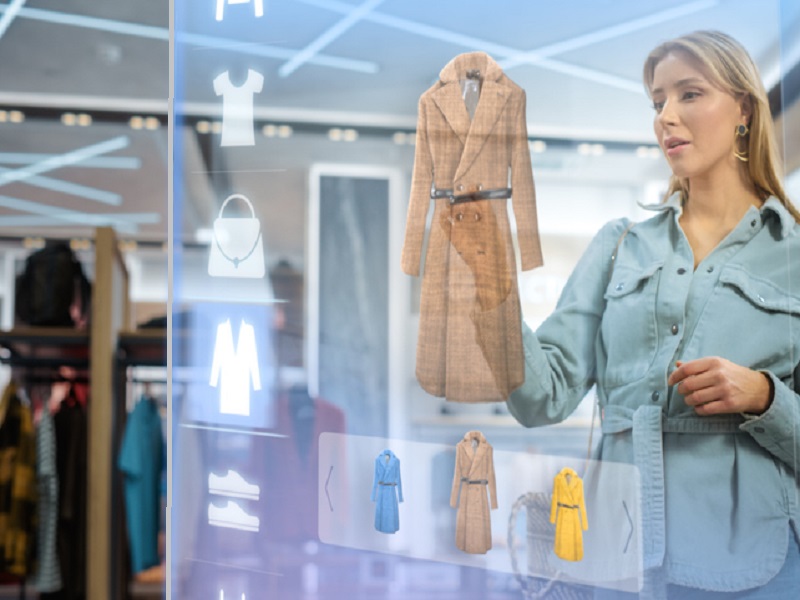The Future of POS and Their Potential to Transform the Retail Industry in 2023 and Beyond

Point-of-sale (POS) systems have been a vital component of the retail industry for several decades, enabling businesses to process transactions, manage inventory, and track sales data. However, with the rapid pace of technological advancement, POS systems are evolving to offer new features and capabilities that have the potential to transform the retail industry in 2023 and beyond.
In this blog, we will explore the future of POS systems and their potential to revolutionize the retail industry.
The Future of POS Systems: Revolutionizing the Retail Industry
1. Mobile POS
Mobile POS systems have been gaining popularity in recent years, and this trend is set to continue in 2023 and beyond. Mobile POS systems enable businesses to process transactions on mobile devices, such as smartphones and tablets, providing flexibility and convenience for both customers and employees.
Mobile POS systems are particularly beneficial for small businesses, as they offer a cost-effective alternative to traditional POS systems. They also enable businesses to process transactions from anywhere, making it easier to sell products and services on the go.
In addition, mobile POS systems offer several other benefits, such as reduced transaction times, improved customer engagement, and increased efficiency. As such, we can expect to see an increased adoption of mobile POS systems in the retail industry in 2023 and beyond.
2. Artificial Intelligence (AI)
AI has the potential to revolutionize the retail industry, and POS systems are no exception. AI-powered POS systems can offer several benefits, such as improved inventory management, personalized customer experiences, and enhanced fraud detection.
For example, AI-powered POS systems can analyze sales data to identify trends and patterns, enabling businesses to make more informed decisions about inventory management. They can also offer personalized recommendations to customers based on their purchase history, preferences, and behavior, improving the overall customer experience.
AI-powered POS systems can also help businesses detect and prevent fraud more effectively. By analyzing transaction data in real-time, these systems can identify suspicious transactions and alert businesses to potential fraud before it occurs.
As such, we can expect to see an increased adoption of AI-powered POS systems in the retail industry in 2023 and beyond.
3. Cloud-based POS
Cloud-based POS systems are becoming increasingly popular among retailers, and this trend is expected to continue in the years to come. These systems allow retailers to access their data and applications from anywhere, as long as they have an internet connection.
Cloud-based POS systems offer several benefits over traditional on-premise systems. First, they are more scalable, allowing businesses to easily add or remove features as their needs change. Second, they are more cost-effective, as businesses only pay for the features they need and can avoid the upfront costs associated with purchasing and maintaining hardware.
Cloud-based POS systems also offer increased security, as data is stored in the cloud and can be accessed securely from anywhere. This can help businesses reduce the risk of data breaches and other security threats.
4. Contactless Payments
The COVID-19 pandemic has accelerated the adoption of contactless payments, and this trend is set to continue in 2023 and beyond. Contactless payments enable customers to pay for products and services without touching a POS system, reducing the risk of transmission of viruses and other germs.
Contactless payments are also faster and more convenient than traditional payment methods, enabling businesses to process transactions more quickly and efficiently.
As such, we can expect to see an increased adoption of contactless payment methods, such as mobile payments and contactless cards, in the retail industry in 2023 and beyond.
5. Augmented Reality (AR)
Augmented reality (AR) is another technology that has the potential to revolutionize the retail industry, and POS systems can play a key role in this transformation. AR enables customers to visualize products in real-world environments, enhancing the overall shopping experience and increasing the likelihood of making a purchase.
AR-powered POS systems can also offer several other benefits, such as improved customer engagement, reduced returns, and increased efficiency. For example, AR-powered POS systems can enable customers to see how products will look in their homes before making a purchase, reducing the likelihood of returns and improving overall customer satisfaction.
As such, we can expect to see an increased adoption of AR-powered POS systems in the retail industry in 2023 and beyond.
6. Integration with other systems
Finally, one of the most significant trends in POS systems is integration with other systems, such as e-commerce platforms, loyalty programs, and marketing.
This integration enables retailers to gather customer data from various sources and use it to improve the overall customer experience. For instance, by linking POS systems with loyalty programs, retailers can personalize promotions and discounts based on customer purchase history, preferences, and loyalty status.
Conclusion
The future of POS systems looks bright, with advancements in technology and increased integration with other systems expected to transform the retail industry in 2023 and beyond. Retailers who adopt these new technologies and integrate their systems will be better positioned to meet the evolving needs and expectations of their customers, improve operational efficiency, and drive business growth. As such, POS systems are set to play a significant role in the future of retail, enabling retailers to stay competitive and thrive in a rapidly changing marketplace.